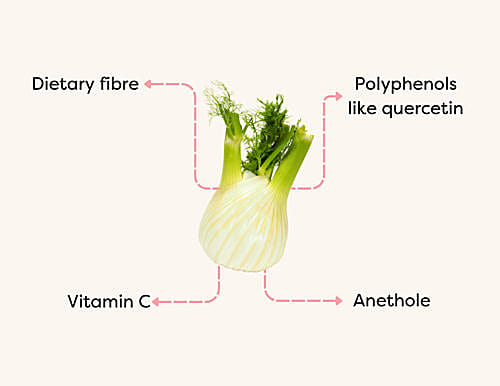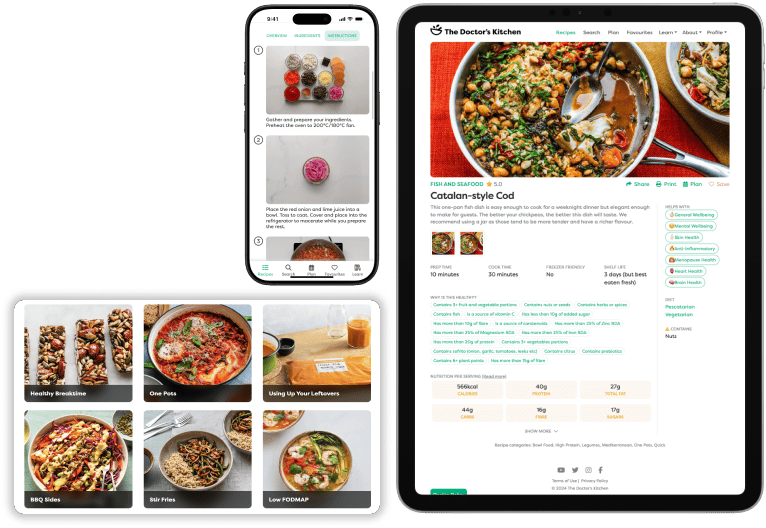Fennel: Benefits for pain & menopause
28th Jun 2024
Whether you're slicing it for salads, simmering it slowly or using the seeds, fennel brings a range of nutrients and beneficial plant compounds that could lower inflammation, pain and menopause symptoms.
Key points
Source of
- Dietary fibre ~3.1g per 100g
- Key nutrients, such as calcium, potassium, phosphorus and vitamin C.
- Polyphenols, such as quercetin, caffeic acid and gallic acid.
- Anethole, which is the main compound in the essential oil. It shows anti-inflammatory and estrogenic effects.

Health benefits
1. Menopausal symptoms
Taking fennel extract helped improve symptoms like hot flashes and sleep issues in menopausal women, according to two reviews of clinical trials.
2. Menstrual pain
In patients with painful menstruation, fennel extract effectively reduced pain intensity, and cinnamon shortened pain duration, as shown in a meta-analysis of nine randomised controlled trials.
3. Joint pain
In a small trial of 66 patients with knee osteoarthritis, fennel extract improved knee pain intensity more than placebo.
The research is ongoing: The studies used fennel extract in capsules with small sample sizes and methodological concerns, so we’re still not sure how it applies to eating whole fennel.
5 ways to enjoy
- Crunchy salad like Sicilian fennel-orange salad.
- Soups & stews like the Provençal fish soup Bouillabaisse.
- Buttery side dish, roasted with garlic, herbs, salt, pepper, and olive oil.
- Slaw with apples, red onion, and red cabbage.
- Digestion tea like Indian Saunf Wali Chai.
References/sources
Menopause: Lee et al. 2021 | Khadivzadeh et al. 2018
Menstrual pain: Xu et al. 2020
Joint pain: Alazadeh et al. 2020
